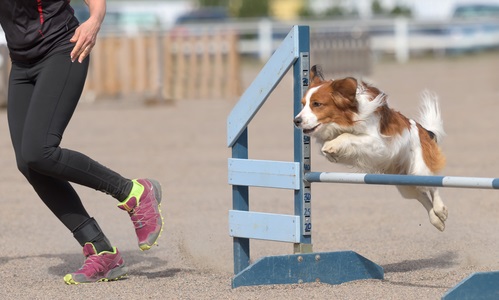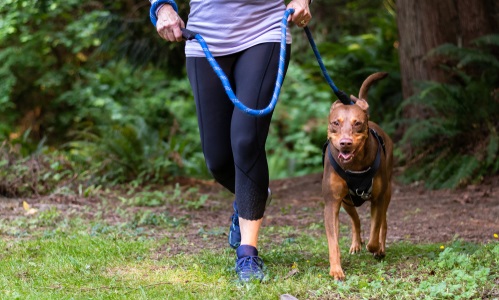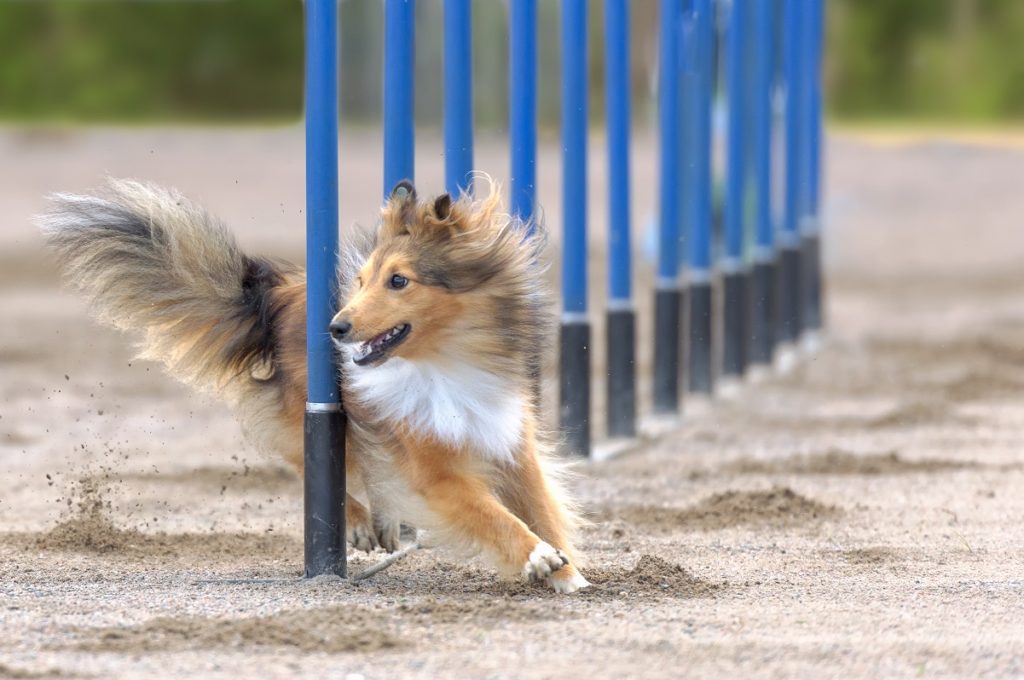Dogs are full of energy. They are naturally athletic, pose high levels of intelligence, and are genetically predisposed to work well in a team environment. It is no surprise that dogs make terrific partners for athletic activities like hiking, hunting, and swimming, and for the most part, dogs love to showcase their athletic talents. There are even athletic events that are canine-specific in which owners and their dogs can showcase just what incredible athletes different breeds of dog can be.
Whether your dog’s skillset is ranks as an award-winning athlete or a casual weekend hiker, it is vital to help your dog maintain his natural athleticism. There are steps you and your dog can take together to ensure that your dog is maintaining and preserving his activity levels long term. Canine fitness training is the best way to ensure your dog stays at the top of his game. Here’s what you need to know about it.
Understand Your Dog’s Fitness Level
Not all dogs are going to be at the same fitness level, and each owner should create a fitness routine that is best for your dog. Always remember that before you increase your dog’s activity, you should consult with a veterinarian to ensure that your pup is physically fit to do so. Do not assume that your dog is up for the task but instead ask a trained medical professional. Discuss the canine fitness equipment, activities, and practices you will be using to get your dog into tip-top shape.
Start Small With Your Canine Fitness Training
As mentioned before, your dog is a naturally gifted athlete. Just think about how fast your dog can run, and how high he can jump compared to the size of his body. After only a few seconds of watching your dog do anything athletic, it becomes instantly clear that the natural athleticism of a dog is unparalleled. However, even the best athletes need to condition and train their bodies so that muscles and joints stay flexible and durable over time. Canine fitness training is all about keeping your dog healthy, and a little goes a long way.
 It is easy to think of fitness training for dogs as some regimented daily activity that is strenuous and tough. It is important to remember that canine fitness training is not the same type of training regimen as a human going to the gym. The activities you and your dog take part in should feel more like playful games as this will yield the best results for you and your dog. Activities should be physically and mentally challenging but not strenuous or demanding. Make sure to break up training throughout the course of the week, and while the activities should feel playful and fun for you and your dog, it is essential to make a distinction between regular play and fitness training.
It is easy to think of fitness training for dogs as some regimented daily activity that is strenuous and tough. It is important to remember that canine fitness training is not the same type of training regimen as a human going to the gym. The activities you and your dog take part in should feel more like playful games as this will yield the best results for you and your dog. Activities should be physically and mentally challenging but not strenuous or demanding. Make sure to break up training throughout the course of the week, and while the activities should feel playful and fun for you and your dog, it is essential to make a distinction between regular play and fitness training.
Try Different Exercises
There are many varieties of exercise that can be fun and challenging for your dog. Whether you go for canine agility training or swimming in the backyard, there are many unique activities that can spark interest in your furry companion. Exercises that involve both mind and body are a great way to ensure your dog is getting the most out of his workout. One such activity involves teaching your dog to walk on a leash, which enhances spatial awareness and improves dexterity and mobility.
Set up a small space that is just wide enough for your dog to move forward and back without being able to move or turn side to side. Invite your dog into the corridor using a treat, and when he has walked forward the entire way, coach the dog to walk backward. Reward backward movement with treats until the dog is successfully out of the corridor. Progress will be slow at first, but eventually, your dog will be able to move back quickly and without hesitation by your command. This is just one of many examples of canine fitness training that assists in keeping your dog agile and mobile while improving mental and physical ability.
 Movement should be a regular part of your dog’s life. Whether you are taking strides to help your dog get healthier, or you are looking for fun ways to increase your dog’s natural athleticism, a new canine fitness routine is a great way to keep your dog happy and healthy. Best of all, if your dog is overweight, these training practices can also help him shed those extra couple of pounds. As always make sure you consult a veterinarian before you implement any vigorous new exercises into your dog’s daily routine to ensure what you are doing is safe for your dog. Remember to keep the practices within the range of your dog’s ability, try different activities, and above all else, enjoy the process of watching your dog become the best athlete he can be.
Movement should be a regular part of your dog’s life. Whether you are taking strides to help your dog get healthier, or you are looking for fun ways to increase your dog’s natural athleticism, a new canine fitness routine is a great way to keep your dog happy and healthy. Best of all, if your dog is overweight, these training practices can also help him shed those extra couple of pounds. As always make sure you consult a veterinarian before you implement any vigorous new exercises into your dog’s daily routine to ensure what you are doing is safe for your dog. Remember to keep the practices within the range of your dog’s ability, try different activities, and above all else, enjoy the process of watching your dog become the best athlete he can be.
Sources:
- “Canine Exercise and Fitness Programs for Agility and Dog Sports.” K9 Fitness Solutions, www.k9fitsolutions.com/.
- “Dog Exercise & Weight Loss: Dog Fitness Tips.” American Kennel Club, www.akc.org/expert-advice/health/fitness/.
- “Canine Fitness Training.” Healthy Pets NH, www.healthypetsnh.com/cft/.




